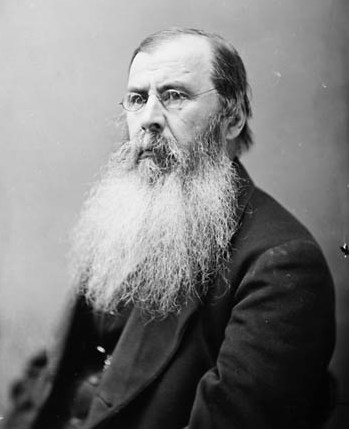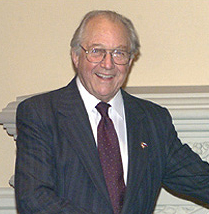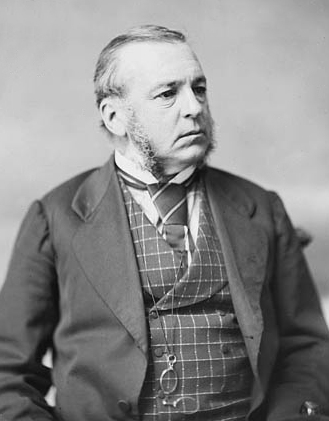|
Speaker Of The Senate Of Canada
The speaker of the Senate of Canada () is the presiding officer of the Senate of Canada. The speaker represents the Senate at official functions, rules on questions of parliamentary procedure and parliamentary privilege, and presides over debates and voting in the chamber. The office of the speaker is held by Raymonde Gagné who has held the position since May 16, 2023. Appointment and precedence By convention, the speaker of the Senate is appointed by the Governor General of Canada, governor general on the Constitutional advice, advice of the Prime Minister of Canada, prime minister. The speaker of the Senate takes Canadian order of precedence, precedence only after the Monarchy of Canada, monarch, the Governor General of Canada, governor general, members of the Monarchy of Canada#Canada's royal family and house, Canadian Royal Family, List of governors general of Canada, former governors general and their Viceregal consort of Canada, spouses, the Prime Minister of Canada, ... [...More Info...] [...Related Items...] OR: [Wikipedia] [Google] [Baidu] |
Raymonde Gagné
Raymonde Gagné (; born January 7, 1956) is a Canadian politician and academic who has served as the speaker of the Senate of Canada since May 12, 2023. She was named to the Senate of Canada to represent Manitoba on March 18, 2016. Background Prior to her appointment to the Senate, Gagné worked in the education field. She worked as a high school teacher and principal and was a longtime faculty member of the Université de Saint-Boniface in Winnipeg, serving as president of the school between 2003 and 2014."Raymonde Gagné nommée membre de l’Ordre du Canada" , September 23, 2015. G ... [...More Info...] [...Related Items...] OR: [Wikipedia] [Google] [Baidu] |
Chief Justice Of Canada
The chief justice of Canada () is the presiding judge of the nine-member Supreme Court of Canada, the highest judicial body in Canada. As such, the chief justice is the highest-ranking judge of the Canadian court system. The '' Supreme Court Act'' makes the chief justice, a Crown in Council appointment, meaning the Crown acting on the advice of the prime minister and minister of justice. The chief justice serves until they resign, turn 75 years old, die, or are removed from office for cause. By tradition, a new chief justice is chosen from among the court's incumbent puisne justices. The chief justice has significant influence in the procedural rules of the Court, presides when oral arguments are held, and leads the discussion of cases among the justices. The chief justice is also deputy governor general, ''ex-officio'' chairman of the Canadian Judicial Council, and heads the committee that selects recipients of the Order of Canada. Additionally, a chief justice also assum ... [...More Info...] [...Related Items...] OR: [Wikipedia] [Google] [Baidu] |
Liberal-Conservative Party
The Liberal-Conservative Party () was the formal name of the Conservative Party of Canada until 1917, and again from 1922 to 1938. Prior to 1970, candidates could run under any label they chose, and in many of Canada's early elections, there were both "Liberal-Conservative" and "Conservative" candidates; however, these were simply different labels used by candidates of the same party. Both were part of Sir John A. Macdonald's government and official Conservative and Liberal-Conservative candidates would not, generally, run against each other. It was also common for a candidate to run on one label in one election and the other in a subsequent election. History The roots of the name are in the coalition of September 11, 1854 in which moderate Reformers and Conservatives from Canada West joined with '' bleus'' from Canada East under the dual premiership of Sir Allan MacNab and A.-N. Morin. The new ministry committed to secularizing Clergy reserves in Canada West and abolishin ... [...More Info...] [...Related Items...] OR: [Wikipedia] [Google] [Baidu] |
Liberal Party Of Canada
The Liberal Party of Canada (LPC; , ) is a federal political party in Canada. The party espouses the principles of liberalism,McCall, Christina; Stephen Clarkson"Liberal Party". ''The Canadian Encyclopedia''. and generally sits at the Centrism, centre to Centre-left politics, centre-left of the Politics of Canada, Canadian political spectrum, with their main rival, the Conservative Party of Canada, Conservative Party, positioned to their Right-wing politics, right and the New Democratic Party positioned to their Left-wing politics, left. The party is described as "big tent",PDF copy at UBC Press. practising "brokerage politics", attracting support from a broad spectrum of voters. The Liberal Party is the longest-serving and oldest active federal political party in the country, and has dominated th ... [...More Info...] [...Related Items...] OR: [Wikipedia] [Google] [Baidu] |
Usher Of The Black Rod Of The Senate Of Canada
The Usher of the Black Rod (), formerly known as Gentleman Usher of the Black Rod () also often shortened to Black Rod is the most senior protocol position in the Parliament of Canada. Black Rod leads the Speaker's Parade at the beginning of each sitting of the Senate and oversees protocol and administrative and logistical details of important events taking place on Parliament Hill, such as the opening of parliament and the Speech from the Throne. The office is modelled on the Gentleman Usher of the Black Rod of the House of Lords in the Parliament of the United Kingdom. Upon the appointment of the first woman to the position of Gentleman Usher of the Black Rod on 20 October 1997, the title was changed to ''Usher of the Black Rod''. The current Usher of the Black Rod is J. Greg Peters. On 12 March 2025, Peters was received by The King, where he was bestowed a new ceremonial sword. The rod The usher carries an ebony and gold staff of office modelled on that used in the House ... [...More Info...] [...Related Items...] OR: [Wikipedia] [Google] [Baidu] |
Speaker Pro Tempore Of The Canadian Senate
The Speaker pro tempore () is an officer and second-highest ranking member of the Senate of Canada. The Speaker Pro Tempore ("acting Speaker") is a member of the Senate who is first nominated by a selection committee. The nomination is then confirmed through a vote in the Senate. The Speaker Pro Tempore serves whenever the Speaker of the Senate of Canada, who is appointed by the government, is unable to attend a sitting of the Senate. The current of Speaker Pro Tempore is Pierrette Ringuette, who is serving in the position from May 1, 2020. List of speakers pro tempore of the Senate The following is the list of speakers pro tempore of the Senate of Canada. See also * President pro tempore of the United States Senate * President of the Senate (Australia) * Speaker of the House of Commons (Canada) The speaker of the House of Commons () is the presiding officer of the lower house of the Parliament of Canada. A Member of Parliament (Canada), member of Parliament (MP), a speak ... [...More Info...] [...Related Items...] OR: [Wikipedia] [Google] [Baidu] |
Government Of Canada
The Government of Canada (), formally His Majesty's Government (), is the body responsible for the federation, federal administration of Canada. The term ''Government of Canada'' refers specifically to the executive, which includes Minister of the Crown, ministers of the Crown (together in Cabinet of Canada, the Cabinet) and the Public Service of Canada, federal civil service (whom the Cabinet direct); it is Federal Identity Program, corporately branded as the ''Government of Canada''. There are over 100 departments and agencies, as well as over 300,000 persons employed in the Government of Canada. These institutions carry out the programs and enforce the laws established by the Parliament of Canada. The Structure of the Canadian federal government, federal government's organization and structure was established at Canadian Confederation, Confederation, through the ''Constitution Act, 1867'', wherein the Canadian Crown acts as the core, or "the most basic building block", of its ... [...More Info...] [...Related Items...] OR: [Wikipedia] [Google] [Baidu] |
Head Of Government
In the Executive (government), executive branch, the head of government is the highest or the second-highest official of a sovereign state, a federated state, or a self-governing colony, autonomous region, or other government who often presides over a cabinet (government), cabinet, a group of ministers or secretaries who lead executive departments. In diplomacy, "head of government" is differentiated from "head of state". The authority of a head of government, such as a president, chancellor, or prime minister, and the relationship between that position and other state institutions, such as the relation between the head of state and of the legislature, varies greatly among sovereign states, depending largely on the particular system of the government that has been chosen, won, or evolved over time. In most parliamentary systems, including constitutional monarchies, the head of government is the ''de facto'' political leader of the government, and is answerable to at least ... [...More Info...] [...Related Items...] OR: [Wikipedia] [Google] [Baidu] |
Head Of State
A head of state is the public persona of a sovereign state.#Foakes, Foakes, pp. 110–11 "[The head of state] being an embodiment of the State itself or representative of its international persona." The name given to the office of head of state depends on the country's form of government and any separation of powers; the powers of the office in each country range from being also the head of government to being little more than a ceremonial figurehead. In a parliamentary system, such as Politics of India, India or the Politics of the United Kingdom, United Kingdom, the head of state usually has mostly ceremonial powers, with a separate head of government. However, in some parliamentary systems, like Politics of South Africa, South Africa, there is an executive president that is both head of state and head of government. Likewise, in some parliamentary systems the head of state is not the head of government, but still has significant powers, for example Politics of Morocco, Moro ... [...More Info...] [...Related Items...] OR: [Wikipedia] [Google] [Baidu] |
Canada Senate Chairs
Canada is a country in North America. Its ten provinces and three territories extend from the Atlantic Ocean to the Pacific Ocean and northward into the Arctic Ocean, making it the world's second-largest country by total area, with the world's longest coastline. Its border with the United States is the world's longest international land border. The country is characterized by a wide range of both meteorologic and geological regions. With a population of over 41million people, it has widely varying population densities, with the majority residing in urban areas and large areas of the country being sparsely populated. Canada's capital is Ottawa and its three largest metropolitan areas are Toronto, Montreal, and Vancouver. Indigenous peoples have continuously inhabited what is now Canada for thousands of years. Beginning in the 16th century, British and French expeditions explored and later settled along the Atlantic coast. As a consequence of various armed conflict ... [...More Info...] [...Related Items...] OR: [Wikipedia] [Google] [Baidu] |
Legislative Council Of The Province Of Canada
The Legislative Council of the Province of Canada () was the upper house for the Province of Canada, which consisted of the former provinces of Lower Canada, then known as Canada East and later the province of Quebec, and Upper Canada, then known as Canada West and later the province of Ontario. It was created by Act of Union (1840), The Union Act of 1840. With the lower house, the Legislative Assembly of the Province of Canada, the two houses constituted the Parliament of the Province of Canada. The first session of parliament began in Kingston, Ontario, Kingston in Canada West in 1841. It succeeded the Legislative Council of Lower Canada and Legislative Council of Upper Canada. The 24 legislative councillors were originally appointed for life. In 1854, the British Parliament authorized their election, and implementing legislation was passed by the Province of Canada in 1856. It was provided that: :* The present appointed councillors would continue to hold their positions until ... [...More Info...] [...Related Items...] OR: [Wikipedia] [Google] [Baidu] |
Speaker Of The House Of Commons Of Canada
The speaker of the House of Commons () is the presiding officer of the lower house of the Parliament of Canada. A member of Parliament (MP), a speaker is elected at the beginning of each new parliament by fellow MPs. The speaker's role in presiding over the House of Commons of Canada is similar to that of speakers elsewhere in other countries that use the Westminster system. The 40th speaker of the House of Commons is Francis Scarpaleggia, who assumed the role on May 26, 2025. The speaker with the longest tenure is Peter Milliken who was elected for four consecutive terms lasting 10 years, 124 days. Role In Canada it is the speaker's responsibility to manage the House of Commons and supervise its staff. It is also the speaker's duty to act as a liaison with the Senate and the Crown. They are to rule over the house and have the government answer questions during the question period as well as keep decorum with the house. The speaker receives a salary of CA$309,700 ($209,800 ... [...More Info...] [...Related Items...] OR: [Wikipedia] [Google] [Baidu] |








